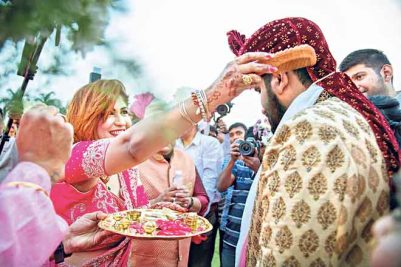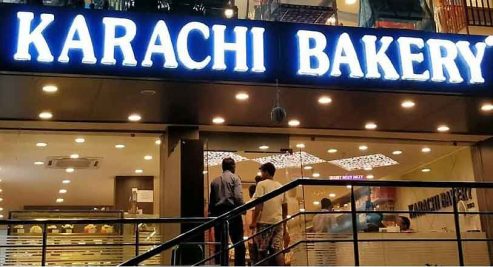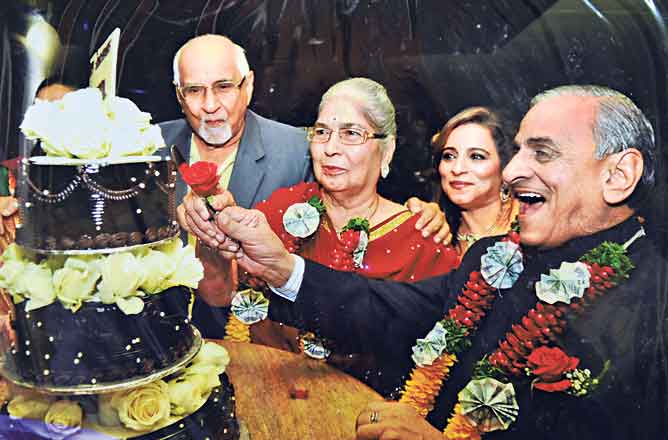

The writer talks to Sindhis who settled in Hyderabad Deccan in the post-Independence period and finds out about their culture, history and lives.
By Sweta Pendyala
With Independence, there cropped up many tensions that prevailed for years to come, and India was broken into two pieces. All the States that fell in the borderline were split into two parts, but Sindh province was left intact. Home to a substantial number of Sindhis, the entire area was declared as part of the newly-formed country of Pakistan. Though Sindh was separated from India, its historical significance doesn’t begin there. It has a rich history which dates back to Indus Valley civilization and its connection with Hyderabad Deccan began when they moved to the Nizam’s dominion to start afresh.
The first Sindhi family which made their way to the city in the beginning of 1900s happens to be of Thakurdas Sajnani who set up Shanker Sher Hotel in Afzalgunj. His family now owns Shalimar Biscuitwala in Sindhi Colony, PG Road. Even the families who own Royal Hotel and Gulchand & Company shifted to Hyderabad before Independence.
Self-empowered community
Sindhis not only have a glorified history, but a glorified present, made up of the combination of struggle, sacrifice and self-empowerment.
Business being the primary occupation of the community, Sindhis, who shifted from Pakistan to India leaving their properties behind, started from the scratch in Hyderabad by setting up their own enterprises becoming one of the leading communities in the business field.
“We neither have any political representation nor do we demand it. Sindhis are not fighters, we are business-minded people who just hope for a peaceful lifestyle,” says Gurucharan Bhavnani, trustee and chairman, F&A, LCH Sadhuram Eye Hospital, who is married to Deepa Bhavnani. Gurucharan moved to Hyderabad from Quetta, Balochistan, in 1948.
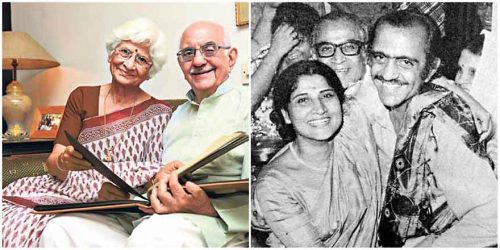
Before, during & after Partition
Ganga Bhavnani who is the daughter of the owner of Bulchand & Company has witnessed Hyderabad as witnessed the effects of before and after Partition. “I am born and partly brought up in Hyderabad Dakhini and Sindh. Before Independence, my father used to stay here for his business and my siblings and I lived with my mother in Sindh for our education as only Urdu was preferred here,” says Ganga who recalls the stark situation the women faced during the difficult period. “It was very difficult for women to step out of home in the entire country. Post-Independence, we had to shift to Hyderabad from Sindh as there were riots all over. The scenario, especially in Hyderabad, worsened,” she adds.
Turning displacement into excellence
In Sindh, where riots broke out when Muslim refugees from India started killing any Hindus they could find, the Sindhis were saved by the local Muslim friends who helped them escape.
Dayal Chimnani, the owner of Easton Marketing Pvt. Ltd, who migrated from Karachi, shared, “We lost everything. Our house and land were given away to someone else. Like most of the Sindhis, my family and I boarded a ship from Karachi in September 1947 and reached Bombay (Mumbai) after 48 hours of journey and we were allotted refugee camps in Devlali,” says Dayal who was a 15-year-old teenager at the time.
Although it was a tough time, Sindhis turned the tables on their displacement and started working towards improvement of their situation – slowly and steadily. With a population of over 35,000 people in the city currently, once the initial migrants were settled, they built many hospitals and colleges, which are now counted among the prominent institutions in the country. “Even in Hyderabad, there are many trusts run by Sindhis which are open for all, LCH Sadhuram Eye Hospital being one of them. Sindhis are famous for their textiles. I once had a store called ‘White Shop’ at Rashtrapati Road when I moved here in 1953 after living in Coimbatore and Ooty for a couple of years,” shares Dayal.
What also helped the enterprising community is the migrants were given land under Relief and Rehabilitation Insurance. Under the scheme, his family was able to regain 10 per cent equivalent of the land they lost back home.
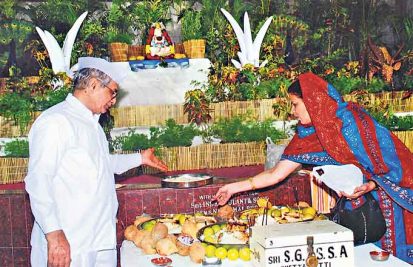
Formation of committee & activities
Once they had a strong foothold in the region, Sindhis, like many other communities in the city, formed committees in early ’50s which took note of all members in the city. In Hyderabad, there are two committees — Sree Sindhi Satsang Darbar Association (Sindhu Bhavan, Sindhi Colony) and Sree Sindhi Guru Sangat Darbar Association (Sindhu Sadan, Hira Hall, Abids) in Secunderabad and Hyderabad respectively. “The community also has a joint committee named Hyderabad and Secunderabad Sindhi Seva Samiti, which is in-charge of organizing all the cultural programs and activities,” adds Dayal Chimnani.
Talking about the year-long initiatives they organize, Ashok Vaswani, president of Sri Sindhi Guru Sangat Sabha Association says, “Though the membership in the association is only for Sindhis, the temples have all the Hindu gods along with Sindhi Ishta Devata Jhulelal. Our associations were formed many decades ago and we have been active in humanitarian service since 35 years which includes serving water to people, running school in our premises, summer classes which are open for all.” Apart from that, they run a charitable homeopathy clinic where 75 to 80 patients are treated daily along with physiotherapy for over 25 patients.
Celebrating together
Every community has a New Year based on the Hindu calendar; the Sindhi New Year is called ‘Cheti Chand’. It falls one day before or after the Telugu New Year, Ugadi. The Sindhis celebrate Cheti Chand to mark the mythical birth of their Ishta devata. “During this festival, most of the Sindhis gather at their community halls and other venues where cultural programs and exhibitions are organized to celebrate the festival,” shares Ratna Chotrani, a journalist.
“The community celebrates all the Hindu festivals. But, Guru Nanak Jayanti is one festival that we celebrate on a wide scale,” adds Ashok Vaswani. They celebrate Holi, Diwali, Dasara, Shivratri and the ‘Chandra raat’ (full moon night) where people take part in bhajan and langar.
Rich in spices
The traditional dishes of Sindhis are very simple, but the combinations they come up with make the meal a delightful experience. “Sindhi kadhi with rice, aloo fry and meethi boondi are one combo, another one is Sai bhaji with methi rice, pakoda and malpua,” shares Ganga Bhavnani.
“Though the Sindhis are predominantly vegetarians, some of the Sindhis prefer eating non-veg also. As we give preference to choice and peace, there is no imposition,” adds 86-year-old Dayal.
Most of the rituals in the Sindhi community are similar to the rest of the Hindu communities, but there are a few interesting rituals that are unusual. The Sindhi engagement ceremony is called ‘Pakki misri’ where the rituals are performed in front of both the families.
One of the most interesting rituals in their wedding is called ‘Sagri’. This ritual takes place post engagement where the bride is adorned with flowers. She has to sport floral ornaments like bracelet, headdress, and garland… this is followed by a ritual called ‘Navgrahi puja’.
“We have the Hindu wedding first, followed by a Sikh wedding since Sindh is influenced by Sikhism. But, it varies from family to family. There is no compulsion,” say Gurucharan and Ganga Bhavnani. The customs are now followed by people according to their convenience but, one tradition that has remained the same since ages is the arrival of the groom on a horse with his nephew. And, with inter-caste marriages, some rituals are not strictly followed keeping the sensibilities of the families in mind.
Changed scenario
The world has evolved, so has the lifestyle. “Earlier, the women used to sport Sindhi pyjama (which looks like a palazzo), a kurti and a waist-length jacket. Brahmin men used to sport dhoti and other men kurta and pyjama, for a special occasion,” share the couple Gurucharan and Ganga Bhavnani. The same holds true for their professions, which was previously limited to business. Now, many youngsters are becoming bankers, doctors and engineers. Among Sindhis, there is a rule that the surname must change every seventh generation after the first name of their ancestor. But, this is not really followed now. They continue the same surname for generations now.
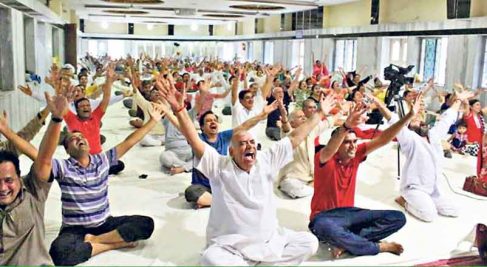
Learning values
Vishal Lalwani, owner of A’La Liberty and secretary of Sindhi Trade Federation, shares, “It is a known fact that our ancestors came to India almost empty-handed. They started afresh and those were their values, traditional practices, calculations and ideas that helped them, and now they are one of the reputed communities in the country.”
Vishal shares that the idea behind forming the Sindhi Trade Federation is holistic development that includes personal, professional and social aspects. The federation conducts seminars and meetings that include younger generation and industry experts from the Sindhi community from all over the country. The average age of the members of this federation is 34.
Vishal says that it now depends on the current generation where they take the community next. So, to maintain or to take it a notch higher, it is very important for the current generation to interact with the elderly people of the community and learn from them. “They succeeded even when there was no technology, but now, we have technology as an advantage and their values will teach us simpler ways to do successful business,” adds Vishal.
Interestingly, it’s not just work for them as there is also a committee of five people who organize the Sindhi Premier League where community people in the age group of 14 to 48 can take part. “These are some of the initiatives we have taken up to develop the interaction between different generations,” Vishal adds.
Namesake
Sindhis have a dedicated colony in Secunderabad and most of the Sindhis reside there which proves that Hyderabad really holds a special place for the community. “Post Partition, when many Sindhis made their way to Hyderabad, the government allotted land for the Sindhis so that they can build their houses and settle down. It is a residential area where most of the Sindhis build their home and reside in peace,” shares Ashok Vaswani, president of Sree Sindhi Guru Sangat Sabha Association.
Known for their business ventures, Sindhis have established many firms in the city. Some of them are old and some are just a few years old but, all of them are prominent. Out of the plenty of names, there are a few groups that have made a mark in the city for their versatile business sense.
Nathumal Watch Agencies; Royal Hotel Group; Gianey’s Silk Centre; Meena Bazar Group; A’La Liberty; Neelam Caterers; Cost 2 Cost Footwear; Sham Pharmacy; Raichandani Builders; Sri Sai Satyanarayana Mithai Bhandar; New Satyanarayan Mithai Bhandar; Ahuja’s; Sri Radha Krishna Sarees; Anil Trading Company; Rocha Bazar; RS Textiles; Karachi Baker.
_____________________
